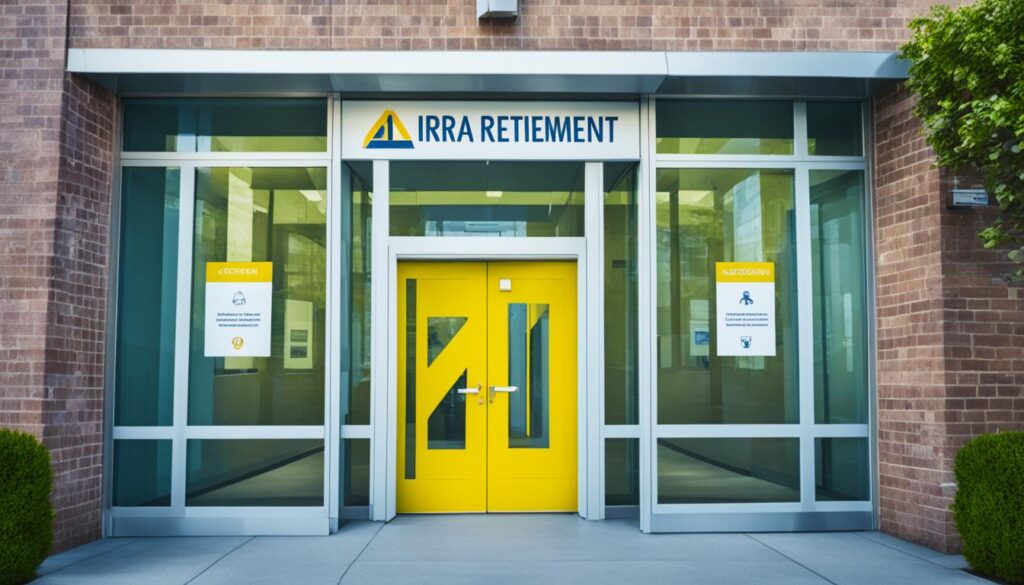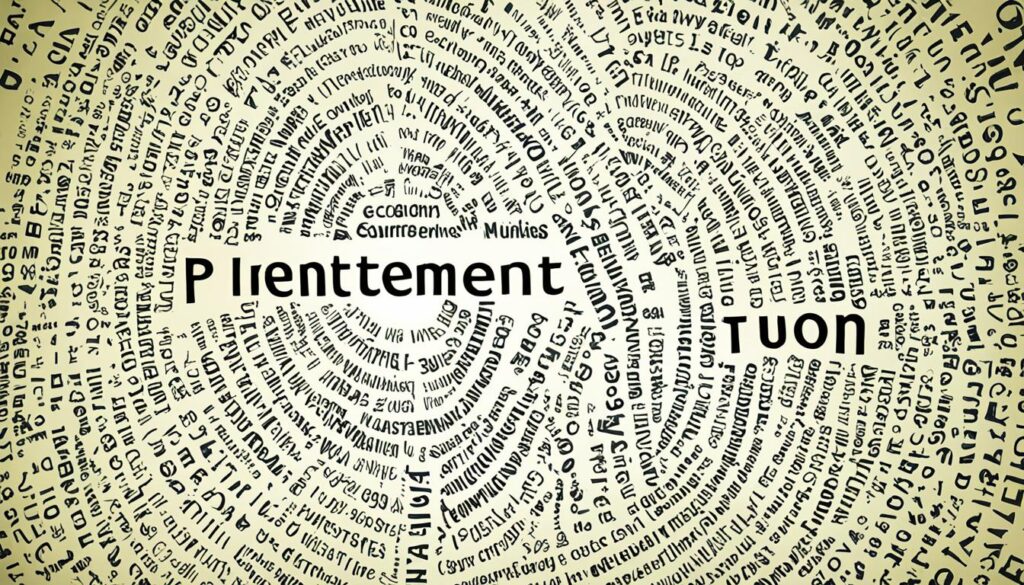Did you realize that only 31% of working mothers feel secure about their retirement savings? It is important to alter this situation and manage your financial future. Planning for retirement is essential for mothers who wish to guarantee a stable and comfortable retirement. By adopting practical approaches customized to your individual situation, you can establish a strong footing for the future years.
Key Takeaways:
- Establish specific and achievable financial goals for retirement.
- Create a budget and savings plan to maximize your savings potential.
- Consider diverse investment options to grow your retirement nest egg.
- Start early and save consistently to take advantage of compounding interest.
- Regularly review and adjust your retirement plan to align with your changing needs and goals.
Establishing Financial Goals
When it comes to financial planning, the first step is to establish clear and achievable goals. This holds true for moms who are looking to secure their future and retire comfortably. By setting financial goals that align with their family’s needs and values, moms can take proactive steps towards a brighter financial future.

When setting financial goals, it’s essential to consider both short-term and long-term aspirations. For moms, this could include saving for their children’s education, purchasing a home, or ensuring a comfortable retirement. By defining these goals, moms can create a roadmap to success.
Establishing financial goals provides moms with a sense of direction and purpose. It helps them prioritize their financial decisions and allocate resources accordingly. By knowing what they are working towards, moms can stay motivated and focused on achieving their goals.
For example, let’s consider a mom named Emma. Emma wants to retire at the age of 60 and live a comfortable and financially independent life. To achieve this, her financial goals include saving a specific amount each month, investing in retirement accounts, and paying off her mortgage.
With her goals in mind, Emma can now create a financial plan tailored to her unique circumstances. She can establish a budget, track her expenses, and make informed financial decisions that align with her retirement aspirations.
Developing SMART Goals
To ensure that financial goals are realistic and achievable, it’s important to follow the SMART goal-setting framework:
- Specific: Clearly define what you want to achieve. Instead of a generic goal like “save for retirement,” be specific, such as “save $500 per month for retirement.”
- Measurable: Make sure your goals can be quantified or measured. This will allow you to track your progress over time. For example, “save $10,000 for a down payment on a home.”
- Achievable: Set goals that are attainable within your financial means. Consider your current income, expenses, and other financial obligations when determining achievable goals.
- Relevant: Ensure that your goals are relevant to your long-term financial aspirations. They should align with your values and contribute to your overall financial well-being.
- Time-bound: Set a specific timeframe for achieving your goals. This adds a sense of urgency and helps you stay focused. For example, “pay off all credit card debt within two years.”
By following the SMART goal-setting framework, moms can create financial goals that are actionable and attainable. This approach increases the likelihood of success and helps moms stay on track to achieve their desired financial future.
“Setting financial goals gives you a clear vision of what you want to achieve. It helps you stay motivated and focused on your long-term financial success. As a mom, it’s important to prioritize your financial goals to secure a better future for yourself and your family.”
Once the financial goals are established, moms can move on to the next step in their financial planning journey: creating a budget and saving plan. This will allow them to allocate resources effectively and work towards achieving their goals.

Creating a Budget and Saving Plan
When it comes to financial planning, one of the most crucial steps for moms is creating a budget and saving plan. Budgeting allows you to assess your monthly income and expenses, giving you a clear picture of where your hard-earned money is going. By identifying areas where you can cut back and redirect funds towards savings and investments, you can take control of your financial future.
To begin the budgeting process, start by listing all of your sources of income. This includes your salary, any side hustles, and any passive income you may have. Once you have a clear understanding of your monthly income, it’s time to delve into your expenses. Categorize your expenses into fixed costs and discretionary spending.
Fixed costs are essential expenses that remain relatively constant from month to month. These can include your rent or mortgage payment, utility bills, car payments, and insurance premiums. It’s important to allocate a portion of your budget to these fixed costs to ensure they are covered.

Next, look at your discretionary spending, which includes things like dining out, entertainment, and shopping. These expenses tend to be more flexible and can be adjusted to prioritize savings. Take a closer look at these discretionary items, considering if there are areas where you can cut back without sacrificing your quality of life.
With a clear understanding of your income and expenses, it’s time to set financial goals and allocate funds to savings and investments. Start by determining how much you want to save each month and set it as a non-negotiable expense in your budget. This will help you build a habit of saving consistently.
Consider automating your savings by setting up automatic transfers from your checking account to a separate savings account. This way, you won’t have to rely on willpower alone to save. By treating savings as a fixed, essential expense, you prioritize your future financial security.
Creating a budget and saving plan is not about restricting yourself from enjoying life. It’s about making intentional decisions with your money and gaining control over your financial situation. By assessing your income and expenses, cutting back on unnecessary spending, and setting clear savings goals, you can pave the way for a brighter financial future for you and your family.

Investing for the Future
Investing is a powerful tool for building wealth.
When it comes to investing, there are various options to consider, each with its own benefits and risks. By exploring different investment avenues, you can find opportunities that align with your financial goals and risk tolerance. Some popular investment options include:
- Stocks: Investing in individual stocks allows you to become a partial owner of a company. In return, you have the potential to earn dividends and benefit from the company’s growth.
- Bonds: Bonds are debt securities offered by governments and corporations. They provide a fixed income stream in the form of periodic interest payments and the return of the principal amount at maturity.
- Mutual Funds: Mutual funds pool money from multiple investors to invest in diversified portfolios of stocks, bonds, or other assets. They are managed by professional fund managers, offering a convenient way to access a broad range of investments.
- Real Estate: Investing in real estate can provide both income and the potential for appreciation. This can be done through direct property ownership, real estate investment trusts (REITs), or real estate crowdfunding platforms.
It is important to note that investing carries risks, and it’s crucial to conduct thorough research and seek guidance from a financial advisor. A professional can help you understand the intricacies of each investment option and develop a personalized investment strategy.
Benefits of Diversification
Diversifying your investment portfolio is an effective risk management strategy. It involves spreading your investments across different asset classes and industries to reduce the potential impact of market fluctuations on your overall returns. By diversifying, you minimize the risk associated with any single investment, as losses in one area may be offset by gains in another.
| Asset Class | Potential Returns | Risk Level |
|---|---|---|
| Stocks | High | High |
| Bonds | Medium | Low to Medium |
| Mutual Funds | Medium to High | Medium to High |
| Real Estate | Medium to High | Medium |
By diversifying your portfolio across these asset classes, you can potentially achieve a balance between risk and returns. However, it’s important to regularly review your investments and make adjustments as needed to ensure they continue to align with your financial goals.

Planning for Retirement
Retirement planning is essential for long-term financial security. It’s never too early to start thinking about your retirement and taking steps to ensure a comfortable future. By estimating your retirement expenses and income needs, assessing factors like healthcare costs and inflation, you can develop a solid plan for the years ahead.
When estimating your retirement expenses, consider all aspects of your lifestyle that are likely to continue during retirement. This includes housing, living expenses, healthcare, and leisure activities. By understanding your current spending patterns and making adjustments for potential changes in the future, you can develop a realistic budget for your retirement years.
Affordable healthcare is a crucial consideration in retirement planning. Healthcare costs tend to increase with age, so it’s crucial to factor them into your financial forecast. Medicare provides some coverage, but it may not cover all your medical needs. Explore supplemental insurance options and budget for potential healthcare expenses to ensure that you are financially prepared.

Another key aspect to address in your retirement plan is the impact of inflation. Over time, the cost of living tends to rise, meaning that your expenses will also increase. It’s essential to factor in a reasonable inflation rate when estimating your future income needs. By accounting for inflation, you can ensure that your savings will be sufficient to maintain your desired standard of living.
Retirement planning is an ongoing process, and it’s important to regularly review and adjust your plan as needed. Life circumstances and financial goals may change over time, so it’s crucial to revisit your retirement strategy periodically. Consulting with a financial advisor can provide valuable insights and guidance, ensuring that your plan remains on track and aligned with your goals.
To sum it up, retirement planning is a proactive approach to securing your financial future. By estimating your retirement expenses, considering factors like healthcare costs and inflation, and regularly reviewing and adjusting your plan, you can work towards a comfortable retirement. Start planning early and take the necessary steps to ensure a secure and fulfilling future.

Start Early and Save Consistently
When it comes to retirement planning, starting early is a crucial strategy that can significantly impact your future financial security. By beginning to save and invest for retirement as soon as possible, you give your money more time to grow and compound.
One of the most effective ways to start early is by contributing to retirement accounts such as an EPF or Private Retirement Scheme. These accounts offer tax advantages and provide a dedicated space to save for your golden years.
But it’s not just about starting early; you also need to save consistently. This means making regular contributions to your retirement accounts throughout your working years. Consistency is key because it allows your savings to grow steadily and helps you develop a disciplined savings habit.
By starting early and saving consistently, you can take advantage of the power of compounding. Compounding refers to the ability of your investment returns to generate more returns over time. The longer your money stays invested, the greater the potential for growth.
Remember, the earlier you start, the more time your savings have to benefit from compounding.
“Start early and save consistently to unlock the full potential of compounding.”
Advantages of Starting Early and Saving Consistently
- Long-term growth: Starting early allows your investments to grow over an extended period, potentially resulting in a larger nest egg for retirement.
- Less financial stress: Regularly saving and building a retirement fund can alleviate financial worries and provide peace of mind for the future.
- Flexibility and freedom: Saving consistently gives you more options and flexibility during retirement, enabling you to pursue activities and goals that bring you joy.
- Compound interest: Consistent saving allows you to take full advantage of compound interest, which allows your savings to grow exponentially over time.

Pitfalls to Avoid
While starting early and saving consistently are sound retirement planning strategies, it’s essential to be aware of potential pitfalls that can hinder your progress:
- Procrastination: Waiting too long to start saving for retirement can significantly limit the growth potential of your investments. Take action now to secure your future.
- Lack of consistency: Saving sporadically or irregularly can undermine the long-term impact of compounding. Make saving a regular habit to maximize your retirement savings.
- Ignoring investments: Saving alone may not be sufficient to keep up with inflation and achieve your retirement goals. Explore investment options that align with your risk tolerance and long-term objectives.
Determine Your Retirement Needs
One of the key steps in planning for a secure retirement is determining your estimated retirement expenses. By taking into account various factors such as housing, healthcare, daily living expenses, and travel, you can gain a clearer understanding of your financial needs during your retirement years. This assessment helps you set realistic savings targets and ensures that you are adequately prepared for the future.
When calculating your retirement expenses, consider the type of lifestyle you envision for your retirement. Will you be downsizing or moving to a different location? Are there any specific healthcare considerations? Will you be spending more or less on travel and leisure activities? These questions can guide you in estimating your retirement needs accurately.
It’s important to remember that retirement needs can vary greatly from person to person. Everyone’s financial situation and lifestyle choices are different, so it’s essential to assess your own unique circumstances and objectives when determining your retirement needs.
Estimating Housing Expenses
Housing expenses are a significant part of retirement expenses. If you own your home, consider the ongoing costs such as property taxes, home insurance, maintenance, and repairs. On the other hand, if you plan to downsize or rent during retirement, take into account the potential rental costs or the difference in living expenses between your current and future housing situation.
Healthcare and Daily Living Expenses
Healthcare expenses tend to increase as we age, so it’s crucial to include these costs in your retirement estimation. Consider expenses related to health insurance premiums, Medicare, prescriptions, doctor visits, and potential long-term care needs. Additionally, account for daily living expenses such as groceries, utilities, transportation, and entertainment.
Travel and Lifestyle Considerations
Many individuals dream of traveling more during their retirement years. If you anticipate an increase in travel expenses, factor this into your retirement needs calculation. Whether it’s exploring new destinations, taking cruises, or visiting family and friends, be sure to allocate funds accordingly to support your desired lifestyle changes.
By realistically estimating your retirement expenses and considering the various factors that will impact your financial needs, you can develop a more informed retirement plan. Having a clear understanding of your retirement needs allows you to set savings goals and make appropriate investment decisions to ensure a comfortable and secure future.

Maximise Employer-Sponsored Retirement Plans
One of the most effective ways to secure a comfortable retirement is by maximizing your employer-sponsored retirement plans. If you have access to a plan like the Employee Provident Fund (EPF), it’s essential to take full advantage of its benefits.
Start by contributing enough to qualify for any employer matching contributions. This is essentially free money that can significantly boost your retirement savings. If your employer offers a matching contribution, contribute at least the amount required to receive the maximum matching funds. For example, if your employer matches contributions up to 5% of your salary, aim to contribute at least 5% to maximize this benefit.
However, don’t stop there. Consider increasing your contributions over time to maximize your retirement savings potential. Even small increases can make a big difference in the long run. By contributing more now, you’ll be better positioned to enjoy a secure retirement later.
“By contributing more now, you’ll be better positioned to enjoy a secure retirement later.”
EPF Contribution Limits
The EPF allows you to contribute up to a certain percentage of your salary, typically capped at a specific amount per year. It’s important to be aware of these contribution limits and adjust your savings accordingly. Here’s an overview of the EPF contribution limits:
| Age Range | Employee Contribution | Employer Contribution | Total Contribution |
|---|---|---|---|
| Below 60 years | 11% | 12% | 23% |
| 60 years and above | 8.5% | 8.5% | 17% |
Note: The EPF contribution rates may vary depending on your employment contract and applicable regulations. Consult your HR department or EPF provider for specific details regarding your contributions.
By maximizing your employer-sponsored retirement plan, such as the EPF, you’ll be taking significant steps towards securing a financially stable retirement. Remember to contribute enough to qualify for employer matching, increase your contributions over time, and stay informed about the EPF contribution limits.

Explore Private Retirement Schemes
Supplementing your employer-sponsored retirement plan with an Individual Retirement Account (IRA) can provide additional benefits and help enhance your retirement savings. In Malaysia, one popular option is the Private Retirement Scheme (PRS).
The PRS offers a range of investment options, allowing you to diversify your portfolio and potentially earn higher returns. By contributing to a PRS, you can take advantage of tax relief, which can reduce your taxable income and increase your overall savings. It’s a smart way to optimize your retirement funds while enjoying potential tax benefits.
With a PRS, you have the flexibility to choose your investment strategy and fund types based on your risk tolerance and retirement goals. You can select from various PRS providers that offer different investment options, such as equity funds, bond funds, and balanced funds. By diversifying your investments, you can mitigate risk and maximize your potential returns.
It’s important to consider your long-term financial goals and the level of risk you’re willing to take on when selecting a PRS. You can consult with a certified financial planner who specializes in retirement planning to guide you through the process and help you make informed decisions.
Here’s a table summarizing the key advantages of exploring private retirement schemes like PRS:
| Advantages of Private Retirement Schemes (PRS) |
|---|
| 1. Tax relief on contributions |
| 2. Diversified investment options |
| 3. Potential for higher returns |
| 4. Flexibility to customize your investment strategy |
| 5. Professional guidance from PRS providers |
By exploring private retirement schemes like PRS, you can optimize your retirement savings, enjoy potential tax benefits, and build a more secure financial future. Remember to review and adjust your PRS contributions periodically to align them with your changing needs and goals.

Diversify Your Retirement Investments
When it comes to securing your retirement, diversification is key. By spreading your investments across various asset classes, you can mitigate risk and potentially increase long-term growth.+
One way to achieve diversification is by investing in different types of assets, such as stocks, bonds, real estate, and mutual funds. Each asset class comes with its own level of risk and potential return, allowing you to create a balanced portfolio that aligns with your retirement goals.
By diversifying your investment portfolio, you reduce the impact of any single investment on your overall financial well-being. If one asset class underperforms, the others can help offset potential losses and maintain stability in your portfolio.
“The stock market can be volatile, and having all your retirement savings in stocks can be risky,” says John Smith, a certified financial planner. “By having a diversified portfolio, you’re better positioned to weather market fluctuations and achieve sustainable long-term growth.”
Diversification also allows you to tap into different market opportunities. While some assets may perform well in certain economic conditions, others may outperform during different periods. By spreading your investments, you increase your chances of capturing positive market trends and maximizing your investment returns.
It’s important to note that diversification does not eliminate risk entirely, but rather helps manage it. It’s crucial to regularly review and rebalance your portfolio to ensure it aligns with your risk tolerance and changing market conditions.
Benefits of Diversification:
- Spread risk across different asset classes
- Potential for higher returns
- Improved stability in your investment portfolio
- Access to different market opportunities

By diversifying your retirement investments, you create a solid foundation for a secure financial future. Consult with a financial advisor to develop a personalized investment strategy that suits your goals and risk tolerance.
Regularly Review and Adjust Your Retirement Plan
Life circumstances and financial goals may change over time. It’s crucial to periodically review your retirement plan to ensure it remains aligned with your objectives. This allows you to make necessary adjustments and optimize your retirement strategy with the help of a financial advisor.
Retirement planning is a dynamic process that requires ongoing monitoring and fine-tuning. Regularly assessing your retirement plan enables you to adapt to changes in your personal life, career, and economic conditions. By staying proactive, you can maximize the potential for a secure and comfortable retirement.

Here are some key reasons why it’s essential to review and adjust your retirement plan:
- Changing Financial Goals: As you progress through different life stages, your financial goals may evolve. Whether you’re planning to start a business, downsize your home, or pursue new passions in retirement, it’s crucial to ensure that your retirement plan reflects these shifting priorities.
- Market Volatility: Financial markets can experience significant fluctuations over time, which may impact the performance of your retirement investments. By regularly reviewing your investment portfolio, you can make informed decisions about reallocating assets and adjusting your risk tolerance to navigate market volatility effectively.
- Changing Income: Your income level can change as you progress in your career, relocate, or experience changes within your household. It’s important to reassess your retirement plan to ensure that your savings rate and investment contributions are still on track to meet your income needs during retirement.
- Healthcare Costs: Healthcare expenses can fluctuate significantly, and estimating these costs accurately is crucial for retirement planning. By reviewing your retirement plan, you can factor in potential healthcare expenses and explore options like long-term care insurance or health savings accounts to protect your retirement savings.
Consulting with a financial advisor can provide valuable insights and guidance during the review process. An advisor can help you analyze your retirement goals, assess your current financial situation, and make necessary adjustments to optimize your retirement strategy.
Adjusting your retirement plan is not a one-time event—it’s an ongoing process. By staying proactive and regularly reviewing your plan, you can ensure that you are on track to achieve your retirement goals and make any necessary course corrections along the way.

Consider Healthcare Costs
When planning for retirement, it is crucial to carefully consider healthcare costs. While Medicare typically covers a portion of these expenses, it may not cover everything. To ensure financial stability in your retirement years, it’s important to research and plan for potential healthcare costs.

One way to address potential healthcare costs is by exploring supplemental insurance options. These insurance plans can provide coverage for expenses that Medicare may not fully cover. Supplemental insurance policies, such as Medicare Advantage Plans or Medigap plans, can help mitigate the financial burden of healthcare expenses in retirement.
Additionally, it is essential to budget for healthcare costs when creating your retirement plan. Take into account routine medical expenses, prescription medications, and potential long-term care costs. By including healthcare costs in your budget, you can better estimate your retirement income needs and ensure that you are financially prepared.
Key Considerations for Retirement Healthcare Costs:
- Medicare Coverage: Understand the aspects of healthcare that Medicare covers and identify potential gaps in coverage.
- Supplemental Insurance: Research supplemental insurance options, such as Medicare Advantage Plans or Medigap policies, to help fill the gaps in Medicare coverage.
- Budgeting: Include healthcare expenses in your retirement budget to ensure that you are financially prepared for medical costs.
- Long-Term Care: Consider the potential need for long-term care in retirement and explore long-term care insurance options to help cover these expenses.
Incorporating healthcare costs into your retirement plan is essential for a secure and worry-free future. By researching supplemental insurance options, budgeting for potential expenses, and considering long-term care needs, you can ensure that you have the financial resources to address healthcare costs in retirement.
Prepare for Longevity
With increasing life expectancy, it’s crucial to plan for a longer retirement period. Moms need to ensure that their savings and investments are sufficient to sustain their lifestyle throughout their retirement years. By preparing for longevity, moms can enjoy financial security and peace of mind for life.
Estimating Your Retirement Income Needs
To prepare for longevity, moms should first estimate their retirement income needs. Take into account your current expenses and consider how they may change in retirement. From housing and healthcare costs to daily living expenses and leisure activities, get a comprehensive understanding of your financial requirements during retirement.
During this estimation process, be mindful of potential inflation and rising healthcare costs. It’s important to plan for these factors to safeguard your retirement income for life.
Creating a Retirement Income Strategy
Once you have a clear idea of your retirement income needs, create a strategy to ensure a steady and reliable income stream. Consider annuities as a retirement income option. Annuities provide a guaranteed income for life, offering peace of mind and financial stability.
Explore other retirement income streams as well, such as rental properties or dividend-paying investments. Diversifying your income sources can help protect against market fluctuations and provide additional financial security.
Consulting with a Financial Advisor
Preparing for longevity and securing a retirement income for life can be complex. It’s highly recommended to consult with a certified financial planner who specializes in retirement planning. A professional advisor can help you evaluate your options, optimize your retirement strategy, and ensure that your savings and investments align with your goals.
Remember, it’s never too early or too late to start preparing for longevity. By taking proactive steps now and creating a robust retirement plan, you can enjoy a financially secure and fulfilling retirement.
Retirement Income Streams Comparison
| Retirement Income Stream | Advantages | Considerations |
|---|---|---|
| Annuities | – Provides a guaranteed income for life – Offers peace of mind and financial stability | – May have limited flexibility in accessing funds – Requires careful selection and understanding of contract terms |
| Rental Properties | – Can provide a consistent rental income – Potential for property appreciation | – Requires active management and property maintenance – Subject to market fluctuations and property vacancies |
| Dividend-Paying Investments | – Offers the potential for regular income – Provides an opportunity for long-term growth | – Subject to market volatility and dividend cuts – Requires careful portfolio diversification |

By carefully considering your options and consulting with the right professionals, you can prepare for longevity and secure a retirement income for life. Start planning today to ensure a financially comfortable and fulfilling future.
Control Debt and Manage Expenses
As you approach retirement, it becomes crucial to prioritize debt management and effectively manage your expenses. By minimizing high-interest debt and streamlining your budget, you can ensure a financially stable future. Living within your means and reducing financial obligations will allow you to redirect more resources towards retirement savings, helping you achieve your goals.
One key aspect of debt management is to focus on paying off high-interest debt first. This includes credit card debt and personal loans with high-interest rates. By tackling these debts early on, you can minimize the amount of interest you pay over time, freeing up more funds for retirement savings.
“Paying off high-interest debt as early as possible is essential for a secure retirement. It allows you to save more and avoid unnecessary interest expenses.” – Financial Advisor
In addition, it is important to create and follow a budget that aligns with your retirement goals. Take a close look at your monthly expenses and identify areas where you can cut back. By reducing discretionary spending and unnecessary expenses, you can free up more money to invest in your retirement future.

Expenses to Consider:
- Housing costs, including mortgage or rent payments
- Utility bills
- Transportation expenses
- Food and grocery costs
- Healthcare expenses
- Insurance premiums
- Entertainment and leisure activities
By carefully managing your expenses, you can ensure that your retirement savings will be sufficient to cover your lifestyle needs. Consider downsizing your home, refinancing your mortgage, or exploring cost-saving measures, such as shopping for more affordable insurance options or finding creative ways to stretch your budget.
Expert Tip:
“Take advantage of technology tools and apps that can help you track your expenses and identify areas where you can save. This will make budgeting and expense management easier and more effective.” – Certified Financial Planner
Remember, controlling debt and managing expenses is an ongoing process. It’s important to regularly review your budget, track your spending, and make adjustments as needed. Seek guidance from a financial advisor to develop a personalized debt management and expense control strategy tailored to your unique circumstances.
Seek Professional Guidance
Retirement planning is a complex process that requires careful consideration and expert knowledge. To ensure that your retirement plan is comprehensive and optimized for your unique circumstances and goals, it is highly recommended to seek professional guidance from a certified financial planner.
A certified financial planner specializes in retirement planning and has the expertise and experience to provide professional advice tailored to your specific needs. They can help you navigate the intricacies of retirement planning, from estimating retirement expenses to developing investment strategies that align with your risk tolerance.
“Seeking professional guidance from a certified financial planner is like having a trusted partner who can guide you through the retirement planning journey. Their expertise can help you make informed decisions and maximize your retirement savings potential.”
A certified financial planner can assist you in assessing your current financial situation, determining the right retirement savings vehicles, and creating a personalized retirement plan that takes into account your retirement goals, income sources, and desired lifestyle.
Moreover, a certified financial planner can help you stay on track with your retirement plan by conducting regular reviews and adjustments as needed. As your life circumstances change or market conditions fluctuate, they can provide valuable insights to ensure that your retirement plan remains aligned with your objectives.
By partnering with a certified financial planner, you can gain peace of mind knowing that your retirement plan is backed by professional knowledge and expertise. They can empower you to make well-informed decisions, optimize your savings, and confidently navigate the complexities of retirement planning.
Key Benefits of Seeking Professional Guidance:
- Access to expert knowledge and advice
- Personalized retirement plan tailored to your goals
- Regular reviews and adjustments to stay on track
- Optimization of retirement savings potential
- Confidence and peace of mind in your retirement plan
When it comes to securing your financial future and achieving a comfortable retirement, the guidance of a certified financial planner can make a significant difference. Take control of your retirement planning journey by seeking professional guidance from a certified financial planner today.

Conclusion
Retirement planning is an essential step for moms to secure a financial future. By implementing strategies tailored to their unique circumstances, moms can build a solid foundation for a comfortable and secure retirement.
Starting early is key, allowing moms to take advantage of the power of compounding and steadily grow their savings over time. Consistently saving a portion of income, even small amounts, can make a significant difference in the long run. Diversifying investments across various asset classes helps manage risk and improves the potential for long-term growth.
It’s important for moms to seek professional guidance from a certified financial planner who specializes in retirement planning. These experts can provide personalized advice, considering factors like retirement goals, risk tolerance, and family dynamics. With their guidance, moms can navigate the complexities of retirement planning and make informed decisions to secure a comfortable retirement.
By taking proactive steps, such as starting early, saving consistently, diversifying investments, and seeking professional guidance, moms can ensure a secure retirement. With careful planning and thoughtful execution, moms can enjoy financial peace of mind and focus on the next chapter of their lives with confidence.











